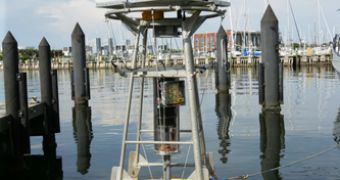Alternative power sources are essential for future human growth. As early studies show, conventional fuels like petrol, natural gas or coal are not going to last forever, and in the near future, actually in 50 years, we will have nothing else to burn, to go on with our daily routine. A horrible nightmare, that could throw us back into the stone age.
Many ideas have been developed as the time passed, and many have been put to test and are now being implemented with success. Solar panels, wind mils, but scientist are now wondering... Where did the tidal motion converters go??? A lot of energy can be harvested from the ocean, and transformed into electricity. The surface of the seas never stops moving due to the wind blowing, and the tidal wave would still come and go, as far as the Moon will exercise its gravitational pull on Earth's surface. "It's a hard technology to try to develop," said Andrew Parish, chief executive of Wavebob Ltd.
It is well known that the salty water of the seas and oceans can easily rust metal surfaces such as iron and steel, so other materials would be needed, the bottom of the ocean floor is not exactly the ideal surface on which to build on, and experimental devices do not produce enough energy to justify the investment.
Surveys show that the coast of the United States has a potential of about 250 million megawatt-hours a year that could be exploited? such a quantity of energy would cover six percent of the US current electricity capacity.
On the other side of the Atlantic, in Europe, there is great support for alternative and renewable power resources. A few projects have been started and are currently running in Portugal and Ireland. Some ideas consider using a buoy-like device technology called single point absorber, floating on the water surface, moving up and down along with the water, but it turns out they only produce enough energy to run a few electronic devices.
Portugal uses a different technique, applied for the floating attenuator device, formed of 120 meters long closed cylinders moving up and down independently, which work hydraulic pumps to generate energy. Current energy produced like this is now very expensive, due to technical difficulties and to the fact that these devices produce little energy; but as technology advances, and wave energy converters become popular, the price will go down.

 14 DAY TRIAL //
14 DAY TRIAL //